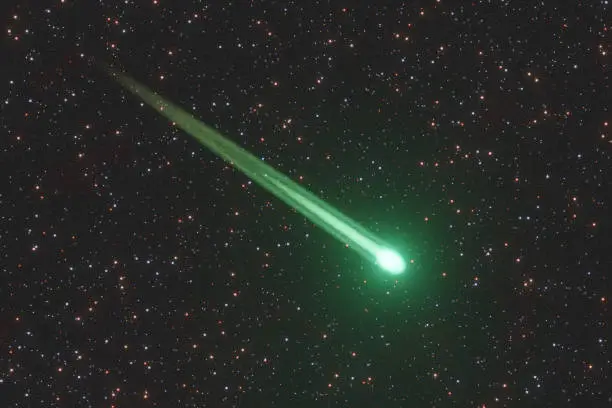Strange Green Glow of Mysterious Comet 3I/ATLAS Puzzled Scientists
Credit: Pixabay
Comet 3I/ATLAS, approaching the Solar System, surprised scientists with a green glow that does not correspond to the molecules detected in its composition.
The unusual composition of comet 3I/ATLAS became apparent even while it was orbiting Jupiter. At that time, a coma—a gaseous envelope—began to form around the comet, even though it was still quite far from the Sun and its hot rays evaporating material from the comet. This indicated a high carbon content in the comet’s material, but not only that.
The formation of the gaseous envelope and its pronounced tail made it possible to study the spectra of 3I/ATLAS’s core. Scientists quickly discovered that the object had elevated levels of carbon dioxide (CO2), nickel, and cyanogen. Furthermore, in an unpublished paper, the researchers demonstrated that the detection of cyanogen indicates a significant depletion of the comet’s gaseous envelope of carbon-chain molecules, including C2 and C3.
Meanwhile, C2 molecules are responsible for the green glow—fluorescence. A paradoxical situation has arisen: the comet glows, but the responsible molecules are not detected in its coma.
3I/ATLAS is expected to reach perihelion in late October, approaching Mars. Discovered on July 1, the comet became the third confirmed interstellar object to visit our cosmic neighborhood. NASA confirmed its extrasolar origin the day after its discovery.




